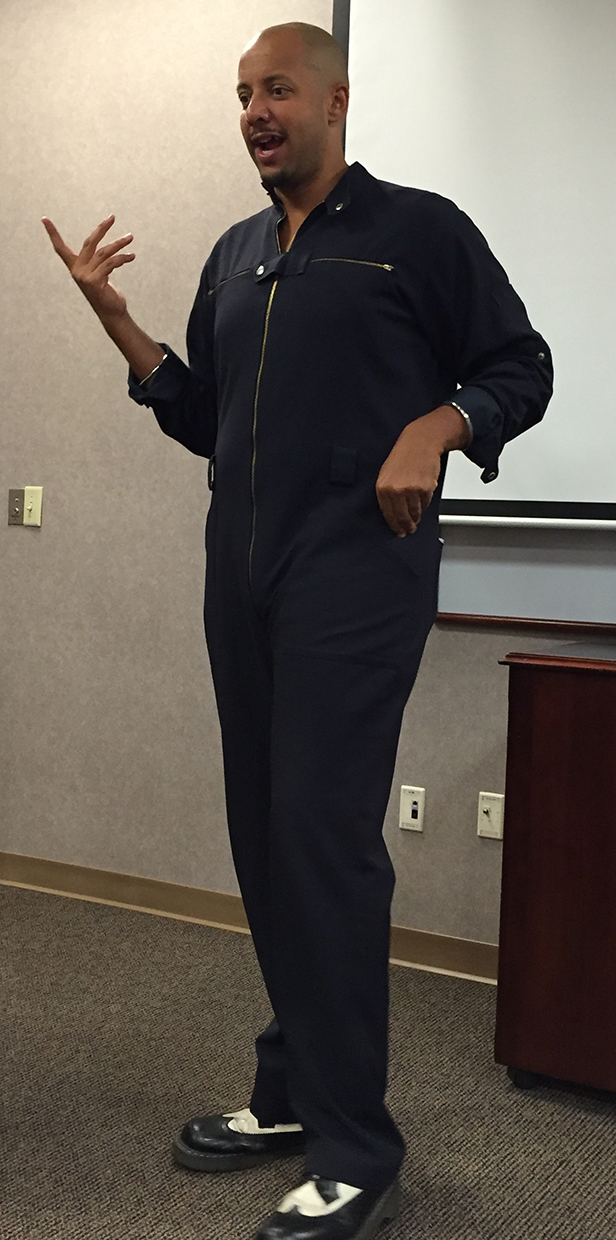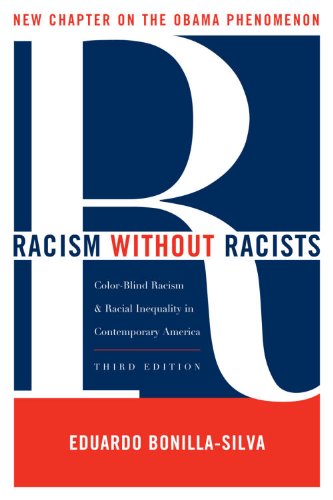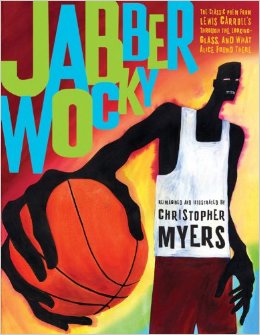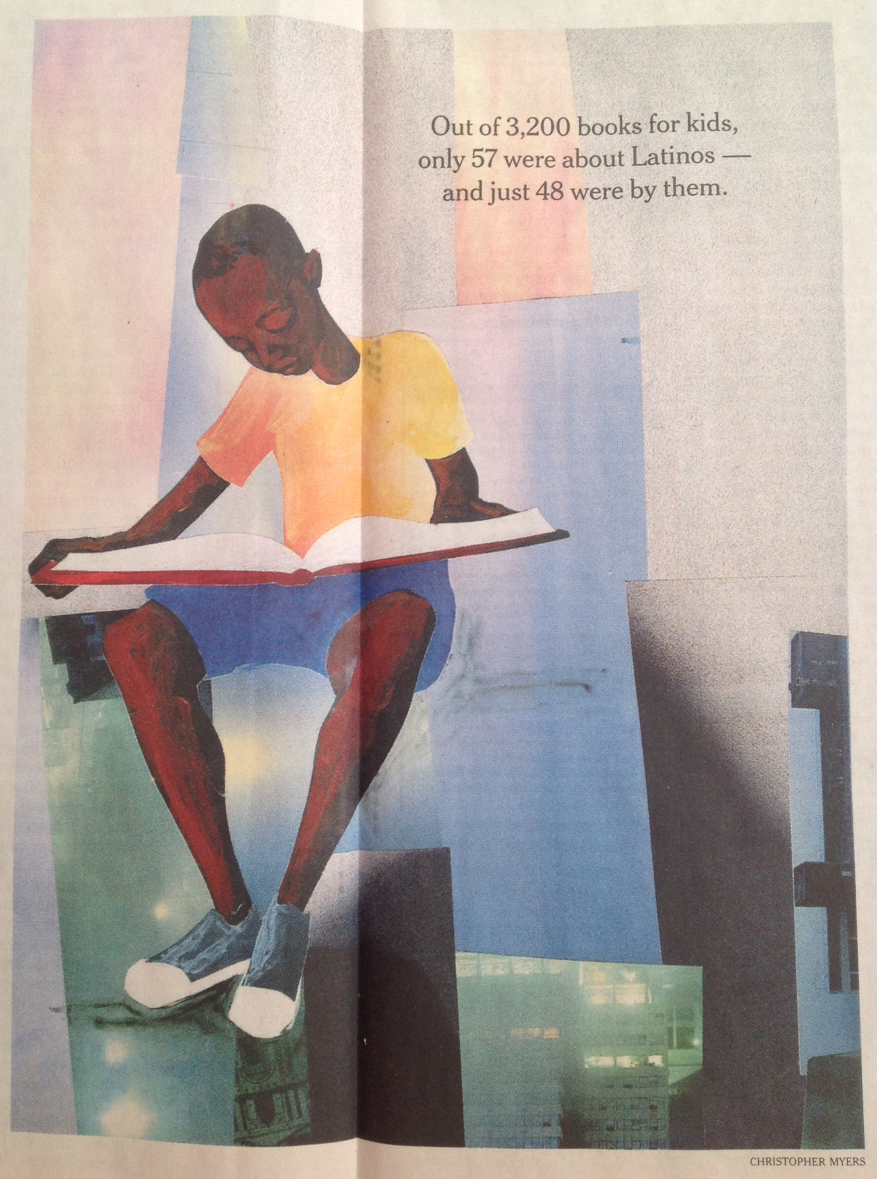 This is not the title of the talk that Christopher Myers gave here on Thursday. It was called “Please Don’t Agree with Me: the Need for Disagreement in Debates About Literature for Young People.” However, I’ve aligned these three words – disagreement, difference, diversity – in my title because one of Myers’s central points is that respectful, thoughtful disagreement respects difference, and that this respect makes diversity (in its various forms) possible.
This is not the title of the talk that Christopher Myers gave here on Thursday. It was called “Please Don’t Agree with Me: the Need for Disagreement in Debates About Literature for Young People.” However, I’ve aligned these three words – disagreement, difference, diversity – in my title because one of Myers’s central points is that respectful, thoughtful disagreement respects difference, and that this respect makes diversity (in its various forms) possible.
As he says, “the most disturbing” argument is that “difference doesn’t really exist.” Contrary to this claim of absence, “Difference is real. The narrative that we are all the same underneath is a fear of difference.” I like this idea because we so often hear the “we are all the same” narrative – offered, often, with the very best of intentions, affirming our shared humanity, encouraging us to see past any differences to build upon what we have in common. While these points of intersection can provide moments of connection, if we really wish to understand another person, we need to get to know their different life experiences. Or, to put this another way, we also have difference in common.
 Though Myers did not invoke color-blindness (in a racial sense), the “difference doesn’t really exist” way of thinking exemplifies what Eduardo Bonilla-Silva calls color-blind racism, a refusal to acknowledge difference that serves as a kind of “ideological armor for a covert and institutionalized system in the post-Civil Rights era. And the beauty of this new ideology is that it aids in the maintenance of white privilege without fanfare, without naming those who it subjects and those who it rewards” (3-4). As Bonilla-Silva argues, via such color-blind racism, whites can “enunciate positions that safeguard their racial interests without sounding ‘racist.’ Shielded by color blindness, whites can express resentment toward minorities; criticize their morality, values, and work ethic; and even claim to be the victims of ‘reverse racism’” (4). Color-blindness is a myth, and anyone who tells you “I don’t see race” (though they may mean well) is lying to you, or to themselves, or both. We all see race. But racial difference need not be an impediment to understanding, or to friendship, or to love. We have difference in common.
Though Myers did not invoke color-blindness (in a racial sense), the “difference doesn’t really exist” way of thinking exemplifies what Eduardo Bonilla-Silva calls color-blind racism, a refusal to acknowledge difference that serves as a kind of “ideological armor for a covert and institutionalized system in the post-Civil Rights era. And the beauty of this new ideology is that it aids in the maintenance of white privilege without fanfare, without naming those who it subjects and those who it rewards” (3-4). As Bonilla-Silva argues, via such color-blind racism, whites can “enunciate positions that safeguard their racial interests without sounding ‘racist.’ Shielded by color blindness, whites can express resentment toward minorities; criticize their morality, values, and work ethic; and even claim to be the victims of ‘reverse racism’” (4). Color-blindness is a myth, and anyone who tells you “I don’t see race” (though they may mean well) is lying to you, or to themselves, or both. We all see race. But racial difference need not be an impediment to understanding, or to friendship, or to love. We have difference in common.
 Myers did not take his own argument in that precise direction. Or, perhaps, he deliberately preferred to imply that argument rather than state it directly. (Note to Christopher Myers: should you happen upon this and find that I am misrepresenting your claims, please clarify, debate, rebut, etc. in the comments below. Thank you!) Myers instead focused on literature and on learning, noting that, via children’s and YA literature, “we give frameworks for thinking about difference.” He did a wonderful job of contextualizing this argument within canonical works, mentioning (for instance) that Lewis Carroll’s “Jabberwocky” is a narrative of difference.
Myers did not take his own argument in that precise direction. Or, perhaps, he deliberately preferred to imply that argument rather than state it directly. (Note to Christopher Myers: should you happen upon this and find that I am misrepresenting your claims, please clarify, debate, rebut, etc. in the comments below. Thank you!) Myers instead focused on literature and on learning, noting that, via children’s and YA literature, “we give frameworks for thinking about difference.” He did a wonderful job of contextualizing this argument within canonical works, mentioning (for instance) that Lewis Carroll’s “Jabberwocky” is a narrative of difference.
I particularly loved his point that agreement can efface difference, whereas “Disagreement recognizes an actual difference.” As he said, “The narrative of I really, really care” – about diverse books, or about the need to secure human rights for Black citizens of the U.S. – “is really stressing me out right now.” The reason it was stressing him out is that if everyone did indeed really really care, these problems would not be problems. As he put it, “The problem wouldn’t exist if we all agreed that these things shouldn’t happen.” Exactly.
His point about agreement effacing difference also reminded me of this passage from Milan Kundera’s The Book of Laughter and Forgetting (1978; English translation, 1980):
You know what it’s like when two people start a conversation. First one of them does all the talking, the other breaks in with “That’s just like me, I . . .” and goes on talking about himself until his partner finds a chance to say, “That’s just like me, I . . .”
The “That’s just like me, I . . .’s” may look like a form of agreement, a way of carrying the other party’s idea a step further, but that is an illusion. What they really are is a brute revolt against brute force, an attempt to free one’s ear from bondage, a frontal attack the objective of which is to occupy the enemy’s ear. All man’s life among men is nothing more than a battle for the ears of others. The whole secret of Tamina’s popularity is that she has no desire to talk about herself. She offers no resistance to the forces occupying her ear; she never says, “That’s just like me, I . . .”
Saving Kundera’s gender politics for another day (or, perhaps, for the comments, below), Kundera’s “That’s just like me, I . . .” resonates with what Myers was saying. Agreement effaces difference. If we really listen to other people, we hear the differences as well as the commonalities, and we do not try to impose our narrative upon theirs. “That’s just like me, I . . .” is attack disguised as sympathetic engagement. In contrast, disagreement is a great way to talk about and to respect difference.
And I do not mean that we always “agree to disagree”: that can be a valuable approach, of course, but some disagreements are so profound that simply “agreeing to disagree” becomes a way of papering over the depth of disagreement. I mean, instead, that respectful disagreement can be a path to better understanding – of both the other person’s position and your own position, which is another point that Myers made. Here is another: “Real disagreement is also real connection.” Yes.
 Myers himself, by the way, is an excellent speaker – remarkably, he delivers a fluent talk without any notes – and knows a lot about an array of subjects, from art to filmmaking, to censorship, to design. You probably know him for his children’s books, and for essays like “Young Dreamers” and “The Apartheid of Children’s Literature” – and he’s eloquent on these subjects. If you don’t know these pieces or his other work, his curiosity, intellect, and versatility make him an artist whose work you should get to know, whether or not you agree.
Myers himself, by the way, is an excellent speaker – remarkably, he delivers a fluent talk without any notes – and knows a lot about an array of subjects, from art to filmmaking, to censorship, to design. You probably know him for his children’s books, and for essays like “Young Dreamers” and “The Apartheid of Children’s Literature” – and he’s eloquent on these subjects. If you don’t know these pieces or his other work, his curiosity, intellect, and versatility make him an artist whose work you should get to know, whether or not you agree.
Thoughts? Disagreements? Use the comments below. Thanks.
Related posts (on this blog)
- Created Equal: The Planned Integrated Community of Village Creek, Conn. (4 July 2015)
- Five Reasons to Get One Word from Sophia (30 June 2015)
- Regarding the Pain of Racism (4 April 2015)
- The Archive of Childhood, Part 2: The Golliwog (13 Jan. 2015)
- #BlackLivesMatter: A Twitter Essay (3 Dec 2014)
- Ferguson: Response & Resources (24 Aug. 2014)
- On Reading the Expurgated Huck Finn; or, Why We Should Teach Offensive Novels (17 Oct. 2014)
- Was the Cat in the Hat Black? (22 June 2014)
- ‘The Boundaries of Imagination’; or the All-White World of Children’s Books, 2014 (17 Mar. 2014)
- Huckleberry Finn, Tom Sawyer, and Offensiveness (5 Jan. 2011)
- Can Censoring a Children’s Book Remove Its Offensiveness? (19 Sept. 2010)

Marah Gubar
Philip Nel
Pingback: What We Talk About When We Talk About Diversity - Kyo Maclear Kids